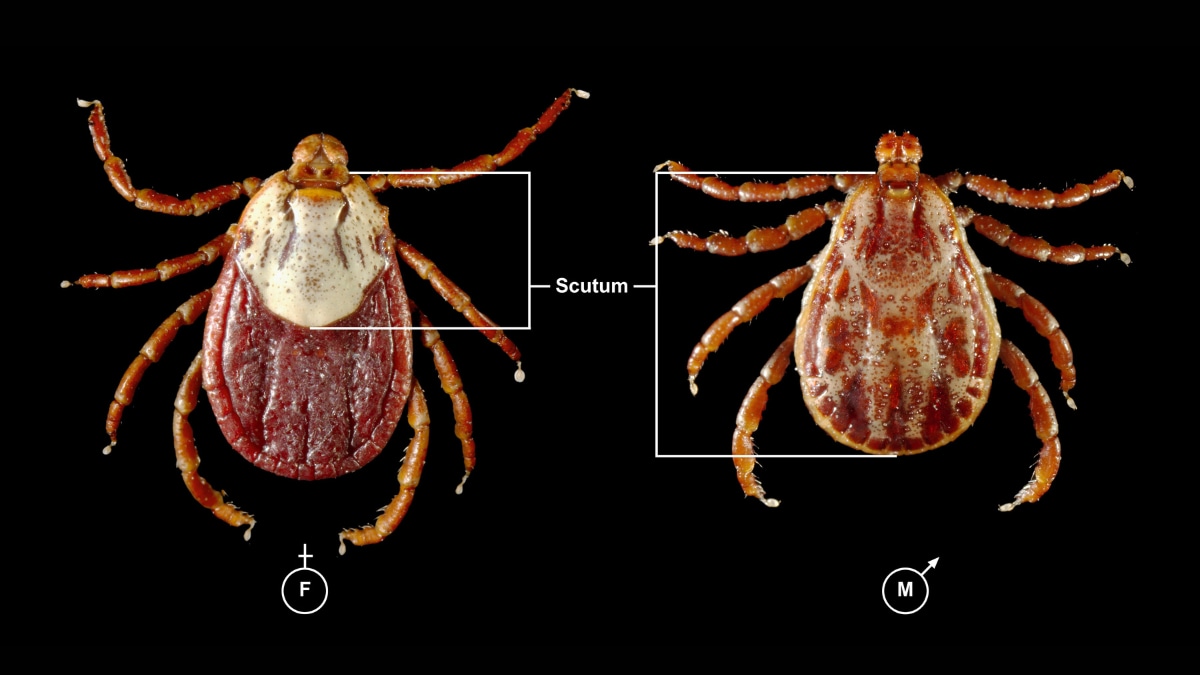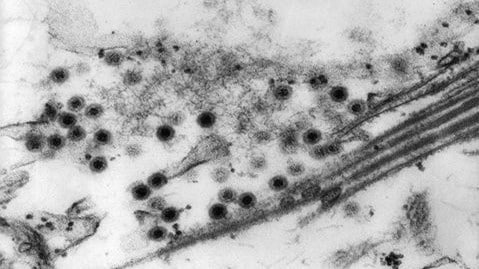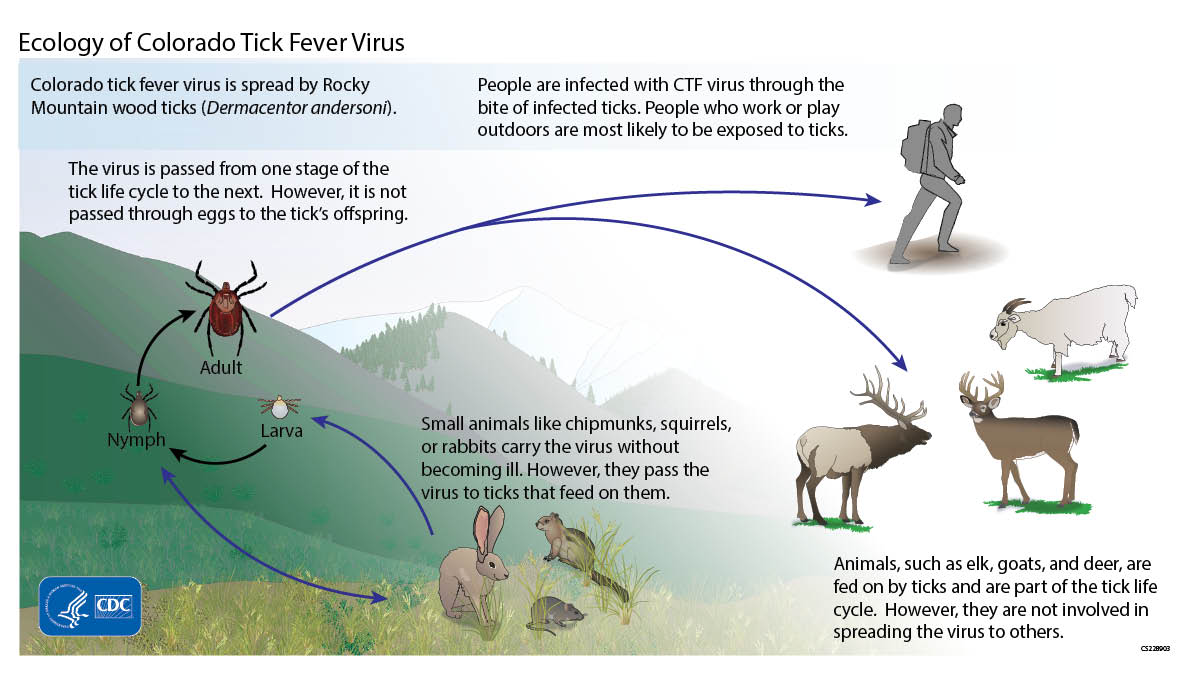Key points
- Colorado tick fever (CTF) is caused by a virus in the genus Coltivirus.
- CTF virus is maintained in the environment by Dermacentor andersoni ticks and rodent hosts.
- Humans are typically infected when outdoors in the western United States and western Canada at 4,000–10,000 feet above sea level.

Virus
- CTF virus is a member of the family Reoviridae, subfamily Spinareovirinae, genus Coltivirus.
- CTF virus contains 12 segments of double-stranded RNA.
- The virus genome is relatively large compared to other arthropod-borne viruses at ~29,000 base pairs.
- The virus has an icosahedral capsid structure and a diameter of 80 nm.

Transmission
People become infected with CTF virus from the bite of an infected Rocky Mountain wood tick (Dermacentor andersoni). Rocky mountain wood ticks are found in the western United States and western Canada at 4,000–10,000 feet above sea level.
Ticks become infected with CTF virus when they feed on the blood of a reservoir animal (an animal that has the virus circulating in its bloodstream). The most important reservoirs for CTF virus are small rodents such as squirrels, chipmunks, and mice. After the tick becomes infected, it passes the virus to other hosts (animal or human) while it feeds.
The virus is not transmitted from person to person, except in rare instances by blood transfusion or perinatally. Since CTF virus can remain in red blood cells for several months, blood and bone marrow should not be donated for 6 months following infection.

